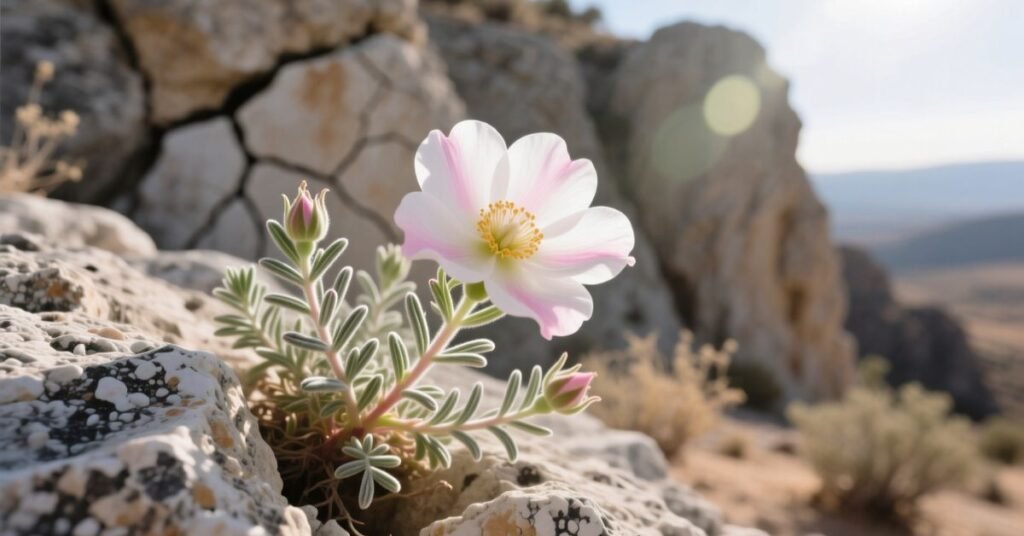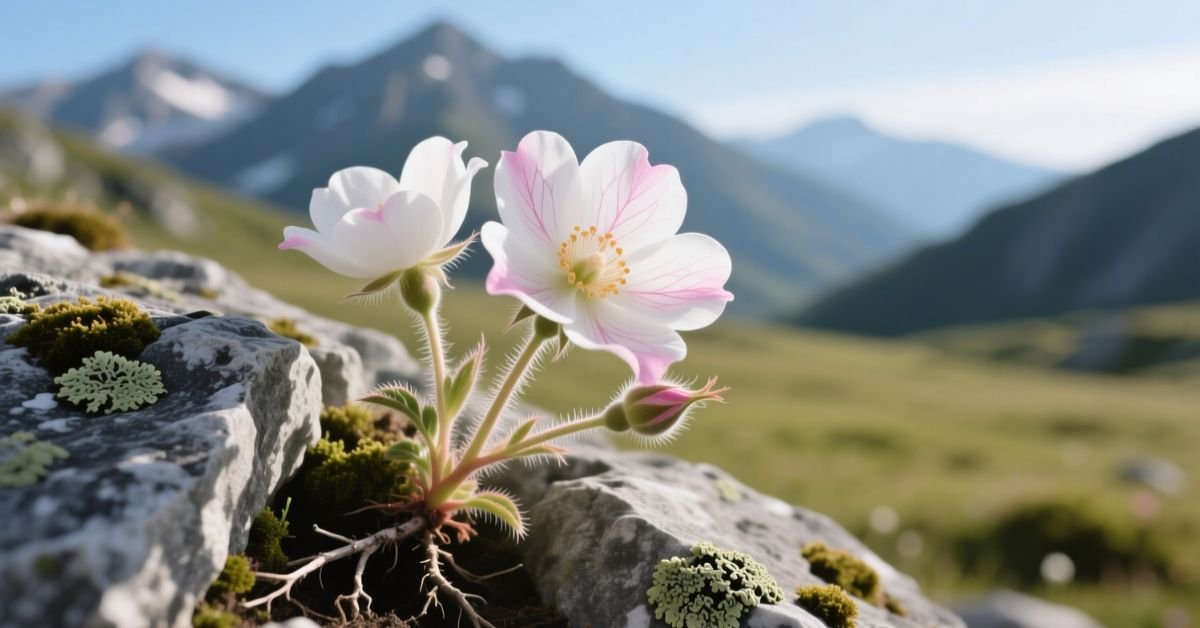Introduction
The white rock rose plant is a hardy evergreen shrub with bright white blooms. It belongs to the Cistus family and thrives in hot, dry conditions. This plant is low growing and spreads easily, making it perfect for rock gardens, borders, and dry landscapes. Its simple care and drought tolerance make it a favorite among gardeners.
Imagine a garden filled with white blossoms glowing under the sun. The white rock rose creates a fresh, clean look with very little effort. It attracts bees and butterflies, adding life and movement to your outdoor space. Its long flowering season brings beauty from spring through summer.
This plant grows best in full sun and well drained soil. It needs little watering once established and requires minimal pruning. With the right conditions, the white rock rose plant will reward you with stunning blooms year after year.
Rockrose Care
Rockrose plants are tough, versatile shrubs that suit many garden styles. Depending on the variety, they can spread as a low groundcover or grow into large mounds several feet high. These plants tolerate intense heat, strong winds, drought, and even salt spray, making them a carefree choice for most North American gardens. They are often planted as informal hedges, groundcovers, or for controlling erosion on slopes.
In early spring and summer, rockrose produces delicate flowers that bloom for only a few hours before falling. This quick bloom cycle is a unique feature of the rockrose family. Despite the short life of each flower, new buds open daily, keeping the plant colorful for weeks.

To grow rockrose successfully:
- Plant it in full sun.
- Choose a spot with well draining soil.
- Feed new plants with a slow release fertilizer at planting time.
- Water regularly at first to help roots establish, then reduce watering once the plant matures.
Light
The white rock plant loves full sun. It grows best in bright light and produces more flowers in sunny areas. While it tolerates partial shade, it may bloom less. Plant it where it receives at least six hours of sunlight daily.
Soil
This plant prefers well drained, sandy, or rocky soil. Good drainage prevents root rot and keeps the plant healthy. Poor, dry soil is fine, but avoid heavy clay. Adding a little compost at planting time can boost growth.
Water
Water the white rock rose regularly after planting to help the roots settle. Once established, it needs very little water and thrives in dry conditions. Overwatering can harm the plant, so let the soil dry between watering.
Temperature and Humidity
The white rock rose plant loves warm and sunny climates.
It grows well in hot, dry conditions.
The plant tolerates low humidity without problems.
It can handle mild frost but may need protection in very cold winters.
Warm temperatures and dry air help it bloom better and stay healthy.
Fertilizer
The white rock rose plant needs very little fertilizer. Feed it lightly in spring to boost flowering. Use a balanced, slow release fertilizer for best results. Avoid heavy feeding, as it can reduce blooms. Simple, light feeding keeps the plant healthy and full of flowers.
Types of White Rock Rose Plant
Here are a few common types you may find:
- Cistus × hybridus (White Rock Rose): Classic white flowers with a yellow center. Compact and great for borders.
- Cistus salvifolius: White blooms with sage like leaves. Very hardy and drought tolerant.
- Cistus × corbariensis: White flowers with a small golden spot. Spreads easily and covers ground quickly.
Common Problems With White Rock Rose Plant
Below is a quick table of common issues and solutions:

| Problem | Cause | Solution |
| Root Rot | Overwatering or poor drainage | Improve soil drainage, water less often |
| Weak Flowering | Too much shade or excess fertilizer | Plant in full sun and avoid overfeeding |
| Pests (like aphids) | Occasional insect attack | Spray with water or mild insecticidal soap |
Pruning
Prune the white rock rose plant lightly after flowering to keep its shape. Remove dead or damaged branches to encourage new growth. Avoid heavy pruning, as the plant may not recover well.
Propagation
You can propagate the white rock rose plant from cuttings. Take semi hardwood cuttings in late summer. Plant them in well draining soil and keep them slightly moist until roots form.
How to Get Rockrose to Bloom
Plant rockrose in full sun and well drained soil. Give it space to spread. Avoid heavy watering once established. Healthy plants bloom easily.
Bloom Months
Rockrose usually blooms in late spring and summer. Some varieties continue blooming into early fall.
How Long Does Rockrose Bloom?
Each flower lasts only a few hours. New blooms appear daily, so the plant stays colorful for weeks.
What Do Rockrose Flowers Look Like?
The flowers are delicate and papery with five petals. They come in white, pink, or yellow with bright centers.
How to Encourage More Blooms
Prune lightly after flowering to keep the plant tidy. Avoid heavy fertilizer, as it reduces blooms. Full sun is essential for strong flowering.
Caring for Rockrose After it Blooms
Let the plant rest after blooming. Water sparingly and allow the soil to dry. Trim lightly to maintain its shape.
Deadheading Rockrose Flowers
Deadheading is not necessary because the blooms drop naturally. You can remove spent flowers for a cleaner look if desired.
Conclusion
The white rock rose plant is a hardy, low-maintenance shrub perfect for sunny, dry gardens. Give it full sun, well-drained soil, and minimal care. With proper planting and light pruning, it will reward you with masses of bright white flowers year after year.
FAQs
- Q1. How tall does the white rock rose plant grow?
It usually grows 2 to 3 feet tall and spreads 3 to 4 feet wide. - Q2. Does the white rock rose plant need a lot of water?
No, it is drought tolerant once established. - Q3. When does the white rock rose plant bloom?
It blooms from late spring into summer. - Q4. Can I grow the white rock rose plant in a pot?
Yes, choose a large container with good drainage. - Q5. Is the white rock rose plant good for pollinators?
Yes, its flowers attract bees and butterflies.


